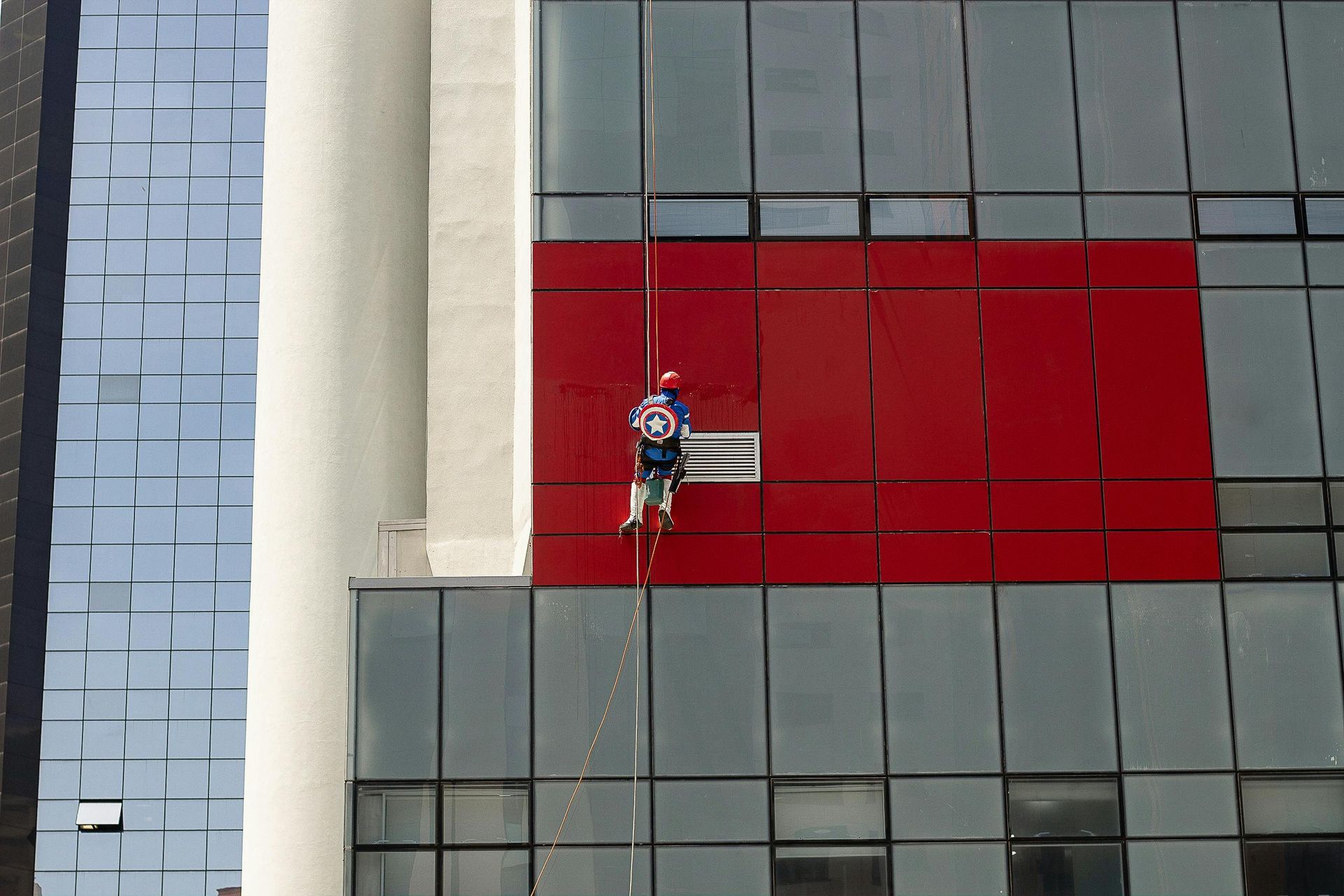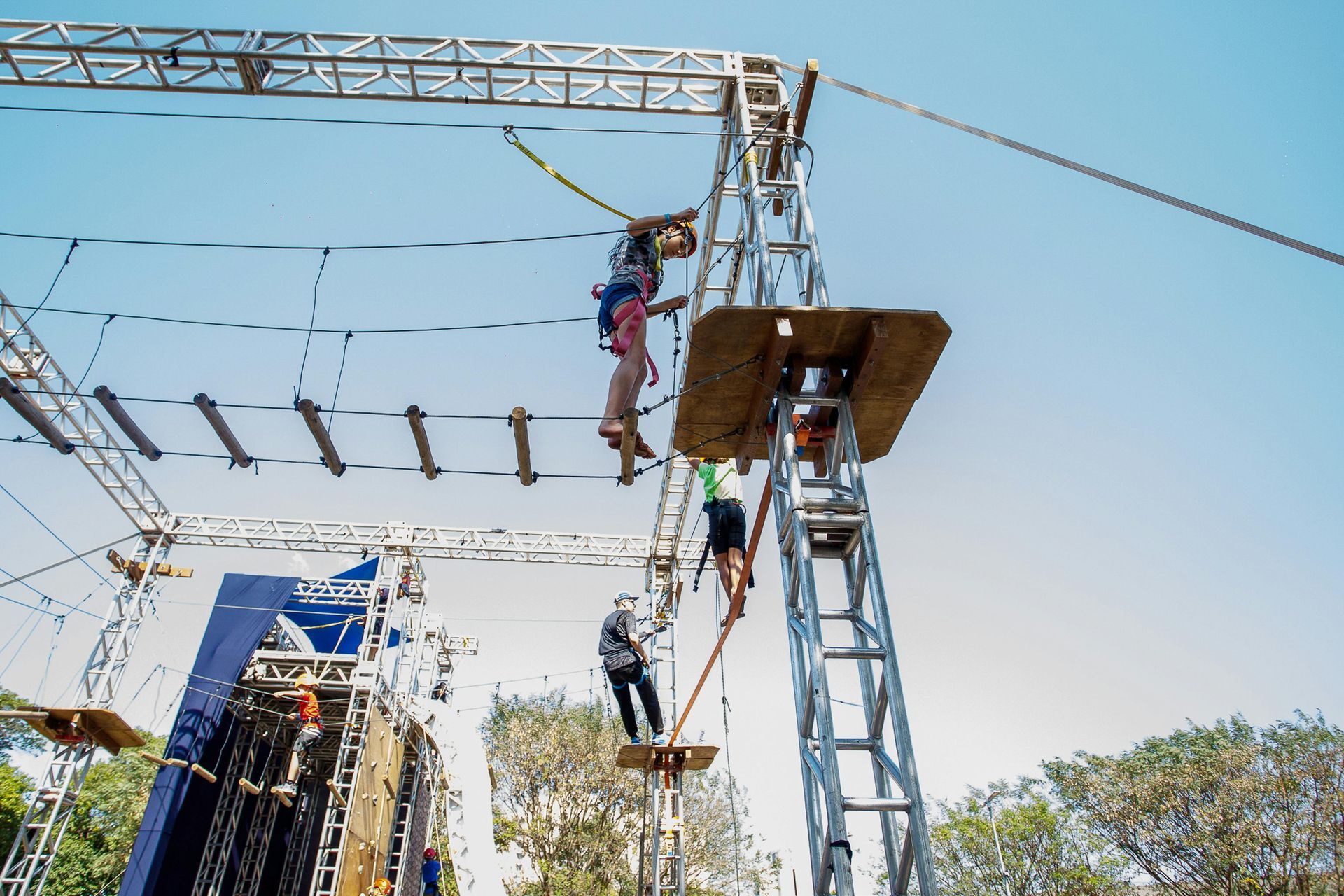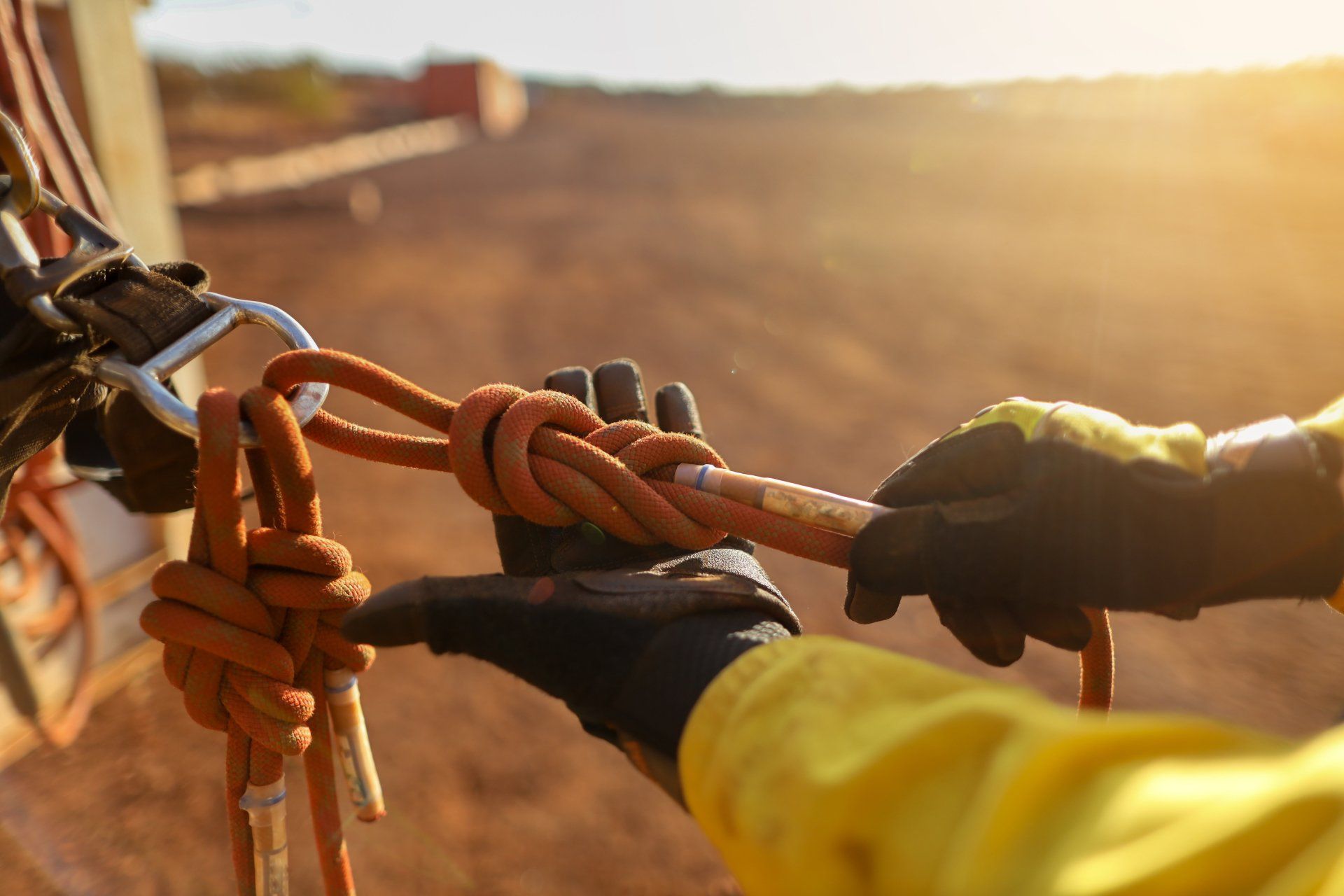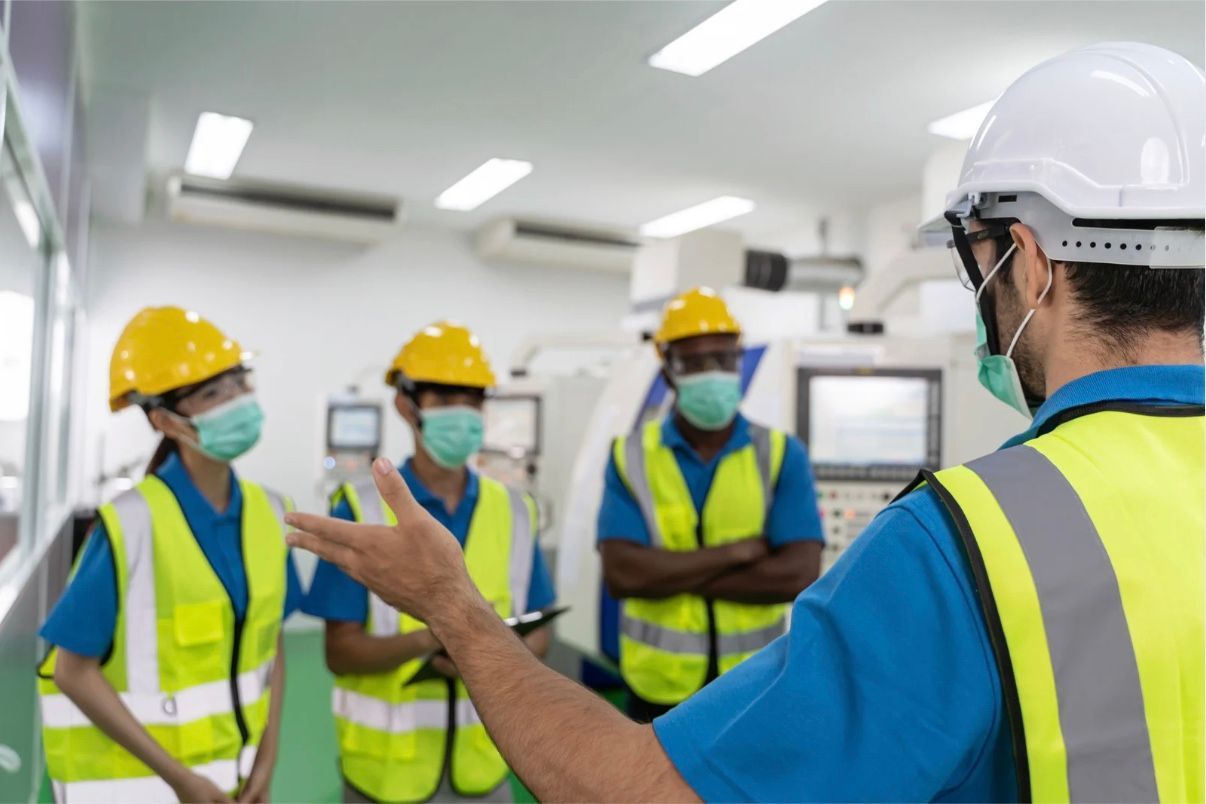Why Access Training Matters: Safety, Skills, and Success at Height

Why Access Training Matters: Safety, Skills, and Success at Height
Working at height is one of the most demanding and high-risk professions in modern industry. From offshore wind farms and construction sites to telecom towers and bridges, thousands of technicians rely on specialised at height skills to perform their jobs safely and efficiently. At the heart of this capability lies access training — the foundation of safety, technical competence, and professional development at height.
Whether you’re just starting out or advancing your qualifications, understanding what access training involves — and why it matters — is key to working safely and building a lasting career in this industry.
What Is Access Training?
Access training refers to the structured instruction, practical experience, and assessment processes that prepare individuals to work in areas that are difficult to reach by conventional means. This working at height training encompasses a range of techniques and disciplines, from rope access and MEWP operation to much simpler working at height awareness and confined space work awareness.
The goal of working at height training is twofold:
- To ensure every technician can reach, work, and rescue safely at height.
- To maintain compliance with UK safety legislation such as the Work at Height Regulations 2005.
Access training isn’t limited to just rope access technicians — it’s essential for anyone who operates in elevated or restricted environments, including inspectors, engineers, and maintenance personnel. In every industry where work at height or in tight areas occurs, access training provides the technical and legal foundation that keeps teams safe.
Why Access Training Is Essential
The UK’s Health and Safety Executive (HSE) consistently identifies working at height as one of the leading causes of workplace fatalities and serious injuries. In 2024, falls from height accounted for nearly one-third of all fatal accidents reported under RIDDOR. Many of these incidents could have been prevented through proper access training, competent supervision, and correct use of safety equipment.
Effective access training consists of the following;
- Builds confidence and competence.
- Reduces incidents and near-misses.
- Ensures legal compliance and site safety.
- Improves operational efficiency and planning.
For employers, investing in qualified personnel means fewer delays, reduced insurance costs, and a stronger reputation for safety and reliability. In many sectors, completing recognised working at height certification is now a contractual requirement before stepping onto site.
Types of Access Training
Access training covers a wide range of skills, tailored to different work environments. The most common include:
Rope Access Training (IRATA Levels 1–3)
Rope access training is one of the safest and most versatile methods for working at height. The globally recognised IRATA course offers three progressive levels:
- IRATA Level 1 Training: Basic rope manoeuvres, rigging, and equipment handling.
- IRATA Level 2 Training: Advanced rigging, rescue techniques, and team support.
- IRATA Level 3 Training: Full supervisory and rescue command responsibilities.
Working at Height Awareness Training
This introductory course in Working at Height Awareness provides essential understanding of hazard identification, fall protection, and the correct use of personal protective equipment (PPE). It forms a vital part of any access training pathway.
Rescue and Emergency Training
Working at height demands preparedness for emergencies. Rescue training ensure technicians can safely respond to incidents such as a suspended casualty or equipment failure, these are skills that are often mandatory on major worksites and integrated into advanced access training programmes, such as those offered by Dangle Academy in Belfast.
Confined Space Training
Many working at height technicians work not only at height but also in underground in restricted environments such as tanks, tunnels, or silos. Access training for confined spaces work covers safe entry procedures, atmospheric testing, emergency escape, and rescue techniques. Courses can be hands-on and practical, giving technicians the chance to apply real entry and rescue methods. Alternatively, classroom-based Confined Space Awareness training courses are ideal for site managers, supervisors and safety officers who need to understand the risks and control measures without directly entering confined areas.
Supporting Safety Training
Additional modules such as Manual Handling Training and Emergency First Aid at Work complement access training by developing a holistic understanding of workplace safety.
The Role of IRATA in Professional Access Training
When it comes to rope access solutions, IRATA International is the global authority. The organisation’s Training, Assessment and Certification Scheme (TACS) sets the standard for safety and technical excellence.
An IRATA certificate signals global credibility, proving that a technician has been trained and independently assessed to the highest international standard. Accredited IRATA centres, like Dangle Academy, are audited regularly to ensure quality and safety compliance.
IRATA (Industrial Rope Access Trade Association) ensures:
- Uniform global standards.
- Competent skill and rescue capability.
- Regular recertification every three years.
- Consistency and traceability through logbooks.
For anyone pursuing a long-term career in rope access, gaining IRATA certification remains the gold standard in access training.
Skills Developed Through Access Training
Access training equips height workers with a diverse set of practical and cognitive skills essential for high-risk environments:
- Rope manoeuvres and controlled descent/ascent.
- Anchor setup and load management.
- Risk assessment and method statement development.
- PPE inspection and record-keeping.
- Communication and teamwork under pressure.
- Rescue readiness and incident management.
These transferable skills empower technicians to perform safely across sectors, from construction to offshore renewables. Continuous access training also ensures these skills stay current as equipment and standards evolve.
Access Training & Methods of Working at Height
| Method | Safety | Cost | Efficiency | Environmental Impact |
|---|---|---|---|---|
| Rope Access | Extremely safe when delivered under IRATA standards | Low - minimal set up and labour | Fast set-up; ideal for short or complex jobs | Very low - no fuel or heavy equipment required |
| Scaffolding | Safe once built but risks in assembly and dismantling | High - material, transport and labour cost | Slow set-up; suited to long term projects | High - heavy materials and large carbon footprint |
| MEWPs (Cherry Pickers) | Safe for static work but limited by ground conditions | Medium to High - Fuel, hire and operator cost | Quick for localised tasks; inefficient for complex structures | Moderate to high - fossil fuel use and transport impact |
Rope access consistently stands out for its adaptability, safety record, and minimal environmental disruption, especially on dynamic or high-level sites. When combined with structured access training, it delivers unmatched performance and reliability.
Career Development Through Access Training
Completing access training opens doors to rewarding roles across multiple industries, including:
- Offshore wind and renewable energy
- Upstream oil and gas
- Civil engineering and structural inspection
- Telecommunications and utilities
- Industrial cleaning and building maintenance
- Bridge and tower repair
Each sector demands professionalism, competence, and continuous learning. As the renewable energy sector expands, so does the demand for certified Global Wind Organisation (GWO) workers and confined space specialists. Continuous professional development through refresher and advanced access training helps technicians remain employable and compliant.
Maintaining Competence after Access Training
Completing access training is only the beginning. In an industry where safety standards evolve and equipment technology advances quickly, maintaining competence is a professional responsibility as much as a regulatory one.
Access Technicians Should:
- Keep their "at height" logbook up to date, accurately recording all work hours and project types.
- Practice rescue techniques regularly to retain confidence in emergency procedures.
- Refresh theoretical knowledge on equipment inspection, rigging principles, and risk assessment.
- Renew certification every three years, or sooner depending on the certification body. Methods, roles or regulations may also change.
- Engage in peer learning and toolbox talks to share insights and reinforce best practice.
Employers play an equally important role by providing refresher courses, site-specific inductions, and opportunities for continuous development of their height work teams.
Ongoing access training ensures that both technicians and working at height teams stay competent, confident, and compliant - a key factor in maintaining the industry's exceptional safety record.
The Future of Access Training
The world of access training is changing fast. As renewable energy, smart technology, and sustainability reshape industry standards, new methods of instruction are emerging.
Expect to see in the near future:
- Virtual Reality (VR) and Augmented Reality (AR) simulations for high-risk scenarios.
- Environmentally focused modules covering carbon reduction and low impact rigging.
- Cross-disciplinary certifications linking rope access with inspection, NDT, and maintenance training combined.
- Greater emphasis on mental resilience and human factors in safety performance with Mental Health Awareness Courses etc.
By combining traditional access skills with innovation, the next generation of access training will be safer, smarter, and more inclusive than ever.
Why Choose Dangle’s Academy?
Here at Dangle, we pride ourselves on offering a wide range of professional and comprehensive inspection, access, coatings, and composite (IACC) industrial services and training courses to cater to the needs of both the private and public sectors. Our dedication to providing high-quality work at height solutions and training has helped us establish a strong reputation in the industry.
With a team of highly skilled and experienced professionals, we are committed to delivering exceptional results that not only meet but exceed our clients' expectations. Our on-site working at height services are designed to minimise maintenance costs in the long and short-term, allowing our clients to save on valuable resources.
Located in Belfast, Northern Ireland, our headquarters serve as the centre of our operations across Ireland. However, we also have a Dangle office based in Scotland, ensuring that we can extend our services to a wider clientele across the United Kingdom. No matter where you are located, our team is always ready to assist you with your industrial maintenance or training needs.
If you would like to learn more about how our dedicated team can help you, we encourage you to
get in touch with us today. Our friendly and professional staff are always available to provide you with the information and support you require.
What access training courses do you offer?
We run weekly IRATA International Levels 1-3 training courses, refreshers and revals, a one-day Rope Access Taster session and working at height awareness access training at Dangle Academy in Belfast.
Where does Dangle Academy deliver access training?
Access training runs weekly at our purpose built, Belfast facility.
Is access training required by law in Northern Ireland?
Yes, Northern Ireland’s Work at Height Regulations (Northern Ireland) 2005 -enforced by HSENI - require work at height to be properly planned, supervised, and carried out by competent people. The law doesn’t mandate a specific brand of “access training,” but IRATA/BS 7985 and ISO 22846 based training is a widely used way to demonstrate competence and meet your duties when working at height.
Do you offer refresher access training?
Yes - ideal for returning technicians, lapsed cards, or teams needing practice on rescues and rigging.
Can you deliver access training on our site?
Contact UsYes, where facilities and logistics allow. We’ll complete a site suitability check and risk assessment first. To discuss your exact requirments please use the contact us button below.


